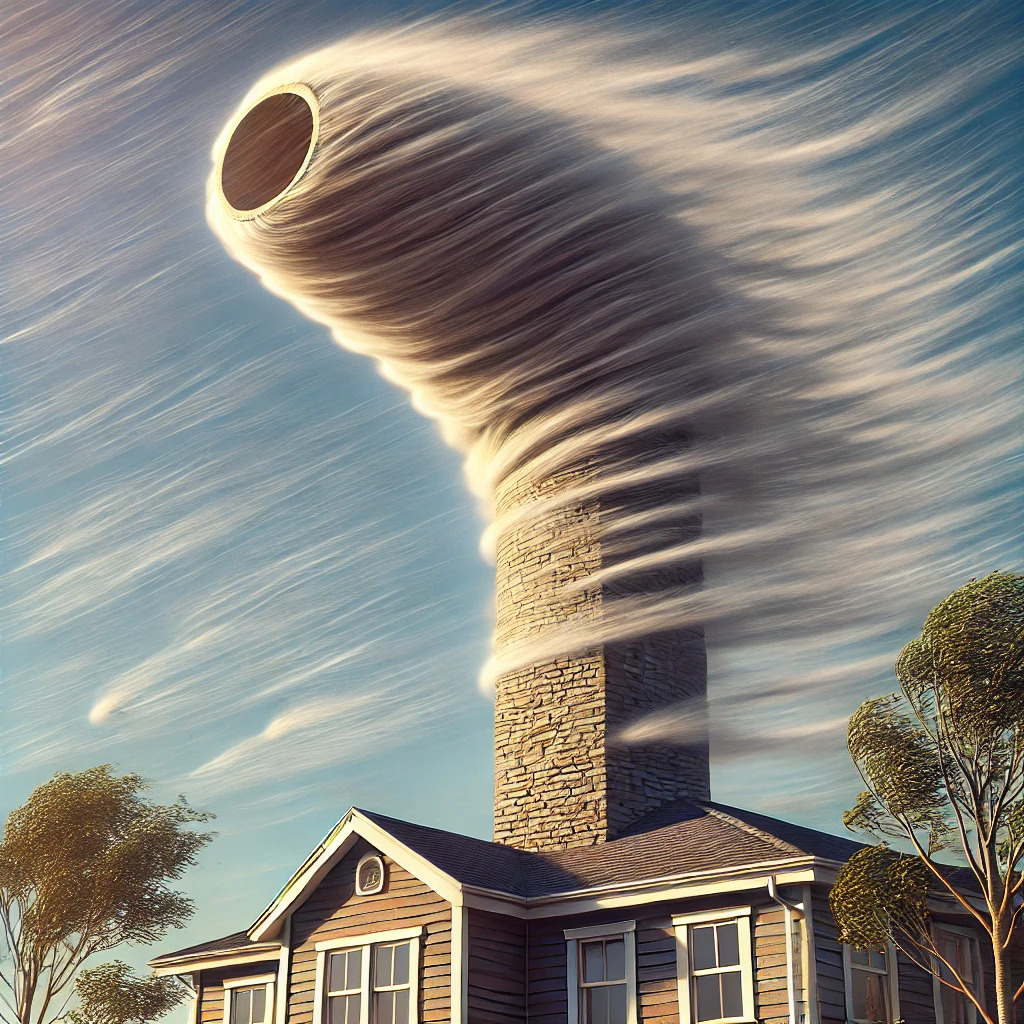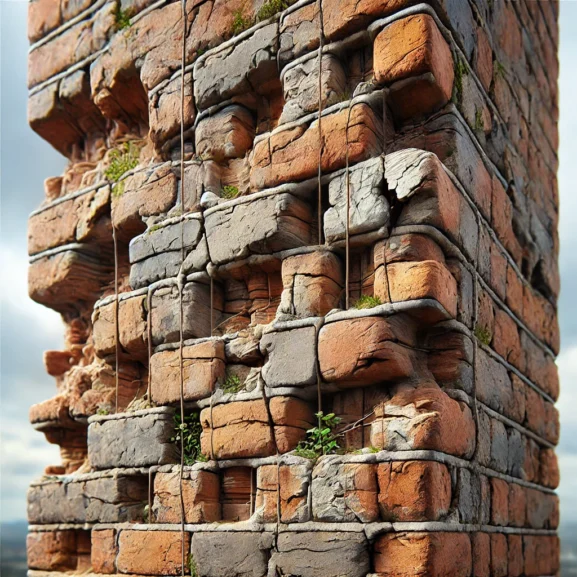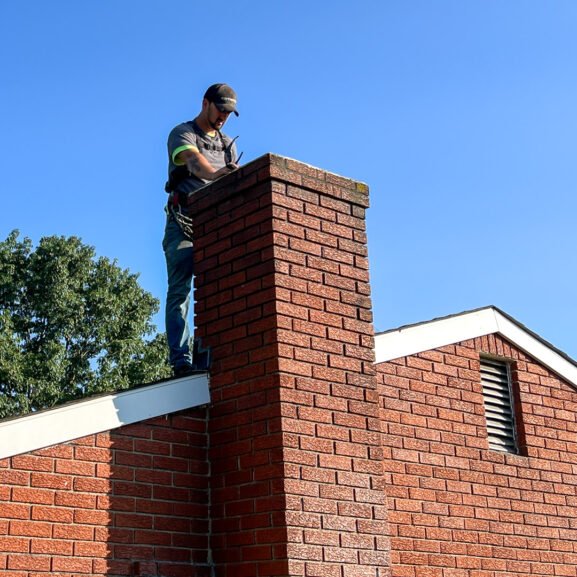Understanding Wind-Induced Downdrafts in Tall Chimneys: Challenges and Solutions
When we think of tall chimneys, we picture them rising high against the skyline. However, there’s more going on than it seems. Wind-induced downdrafts can cause problems. These downdrafts can harm the structure and efficiency of tall chimneys.
In this article, we will examine how wind-induced downdrafts affect tall chimneys and discuss ways to reduce these effects. We’ll also dive into the science behind these powerful winds and examine how they impact industries that depend on tall chimneys. Understanding this is key for engineers and architects. They need this knowledge to design safer, more efficient buildings.
Through real-world examples and expert opinions, we’ll explain this issue. Whether you’re a professional or just curious, this article will help you understand wind-induced downdrafts. It will provide you with useful insights on the topic.
What You Need to Know About Wind-Induced Downdrafts
Wind can cause serious draft problems in tall chimneys. These problems, like disrupted airflow, can affect how well the chimney works. When the wind changes direction, it can push air down the chimney, making venting less efficient. Imagine a giant sneezing down your chimney—it would be messy, right?
Chimney height plays a crucial role in handling these downdrafts. Taller chimneys are more exposed to wind effects. This can increase air pressure differences, leading to unexpected downdrafts. Engineers must design carefully to counter these wind effects.
Here’s what you should consider:
- Chimney Height: Taller chimneys face more wind-induced challenges.
- Air Pressure: Strong winds can alter internal pressures, causing downdrafts.
- Venting Issues: Inefficient venting can lead to indoor smoke.
DIY solutions are tempting, but remember—we don’t recommend them. Professionals understand the dynamics involved. Unique weather patterns can complicate matters. Reach out to professionals for consultation.
For more insights, visit the Chimney Safety Institute of America or the National Fire Protection Association. Our goal is to help you maintain safe and efficient chimneys.
The Impact on Tall Chimneys
Wind-induced downdrafts can wreak havoc on tall chimneys and challenge their performance. Let’s explore the impact on both structural integrity and efficiency.
Structural Concerns
Tall chimneys face structural risks due to wind effects. Downdrafts cause unexpected stress on chimney walls, possibly leading to cracks. The pressure change when the wind reverses adds to the challenge. This situation is no joke—wind reversal can be as sneaky as a raccoon in your attic! Draft problems might occur if we don’t consider these factors. Taller chimneys require precise engineering to withstand these forces.
Chimney height and location are very important. The weather can make things tricky. That’s why professional assessments are necessary. They can help solve these problems. If you need expert advice, give us a call. Reach out to professionals for consultation. Check the Chimney Safety Institute of America to learn more about chimney standards.
Efficiency Implications
Efficiency drops when downdrafts hit tall chimneys. Airflow disruption can alter air pressure, affecting chimney performance. Tall chimneys demand effective venting to handle varying wind conditions. Imagine trying to keep warm when cold drafts interrupt your cozy evening!
Chimney venting systems might need adjustments to improve effectiveness. Concepts like the stack effect come into play. Weather changes mean extra care is needed for smooth operation. Regular maintenance by certified experts ensures optimal function. Avoid DIY fixes—our experts know best. Visit the National Fire Protection Association to learn about fire safety prevention and standards.
Do you have questions about your chimney’s performance? Reach out to us for peace of mind.
Mechanisms Behind Downdrafts

Understanding downdrafts is important for keeping your chimney working well. Winds and temperature changes are major causes. This is especially true for tall chimneys. They are more affected by wind and air pressure changes.
Wind Patterns and Chimney Design
Wind patterns greatly influence downdrafts in chimneys. Standing proudly as skyscrapers, tall chimneys face more challenges from these patterns. Strong winds can lead to wind reversal, causing air to descend instead of rise. This sudden switch can lead to draft problems and airflow disruption.
To fix these problems, chimneys must be designed with local wind conditions in mind. The height of the chimney is also important. Just a little joke: taller doesn’t always mean better unless you’re Tyra Banks on the runway. If you have questions or concerns, reach out to professionals for consultation. External sources, like the National Chimney Sweep Guild, offer additional guidance on best practices.
Thermal Effects and Air Pressure
Thermal effects and air pressure differences can also cause downdrafts. When warm air inside rises, cold air from outside rushes in to replace it, dropping the air pressure inside the chimney. It’s like a game of musical chairs—if there aren’t enough “chairs,” the airflow gets messy. This imbalance can lead to downdrafts and make chimney venting less effective.
The situation becomes more pronounced during chilly months. Efficient chimney venting systems must accommodate these conditions to maintain chimney performance. Interested in professional help? Reach out to professionals for consultation. The Chimney Safety Institute of America is a valuable resource for more insights on chimney safety.
Mitigation Strategies
To keep your chimney working at its best, you must reduce the impact of wind-induced downdrafts. Wind can cause problems in tall chimneys, making them less stable. Using the right strategies can help manage wind effects, improving the chimney’s venting and overall performance.
Design Modifications
Structural adjustments can significantly improve chimney performance by minimizing downdraft issues.
- Chimney Height: Tall chimneys can experience more downdrafts due to greater changes in air pressure. Engineers can design chimneys with the right height to reduce these pressures.
Wind Deflectors: Installing wind deflectors helps redirect the wind away from the chimney, preventing wind reversal and stopping draft issues.
Curved Tops: A curved or louvered cap at the top of chimneys helps airflow move upward and limits downdrafts.
For more details about chimney safety and design principles, visit the Chimney Safety Institute of America.
Technological Solutions
Advanced technology helps mitigate airflow disruption caused by wind effects.
- Smart Sensors: These sensors measure wind pressure and adjust the airflow in real-time, helping optimize chimney venting.
Automated Damper Systems: These systems control the damper position automatically and adjust based on wind conditions, ensuring steady draft performance.
Weather Stations: Special weather systems monitor local conditions. In some areas, wind patterns can change quickly, so these systems adjust chimney operations based on the weather.
Engage with the National Fire Protection Association for additional safety tips and resources. Ready to improve your chimney’s efficiency? Reach out to professionals for consultation. Our experts ensure your chimney remains top-notch without needing DIY fixes.
Case Studies of Affected Chimneys
Exploring real-life scenarios offers insights into handling wind-induced downdrafts in tall chimneys. Here are a few notable cases:
- Various regions have some of the tallest chimneys in the country. Several of these chimneys, which were over 150 feet tall, had draft problems due to strong winds. When tall chimneys aren’t vented properly, airflow issues occur, which can cause smoke to enter the building. Engineers solved this by fixing the venting systems and adding wind deflectors to improve airflow.
Warehouse Chimneys Reversal: A warehouse had a 120-foot chimney. Because of wind reversal, it faced problems with downdrafts. The air pressure was inconsistent, which affected the chimney’s performance. Experts fixed this by adding curved tops. This helped improve airflow and restore balance, increasing the chimney’s efficiency.
Historical Buildings Adaptation: Older buildings often have tall chimneys, which can have trouble with modern wind patterns. A university campus used smart sensors to manage airflow issues. The sensors helped adjust the pressure changes, and automated dampers effectively stopped downdrafts.
These examples highlight common challenges caused by wind impacts on chimney performance. Our expertise and solutions ensure chimneys function safely and efficiently. Reach out to professionals for consultation. For further guidance, check resources from NFPA and the Chimney Safety Institute of America.
Conclusion
It’s important to understand wind-induced downdrafts in tall chimneys. These downdrafts can affect the chimney’s strength and efficiency. By knowing how wind impacts chimneys, we can prevent issues. This helps maintain good airflow and keeps the chimney working properly. It also ensures safety and efficiency over time. Using advanced technologies and design changes, we can reduce these issues. Working with experts ensures chimneys function properly. This helps protect both industrial sites and historical buildings. We must focus on safety and performance as we learn how wind affects tall chimneys. Making informed decisions and consulting with experts is key. Let’s use what we know to make our cities better. We need to make sure our chimneys stay strong. They must be able to withstand nature’s forces.
Frequently Asked Questions
What are wind-induced downdrafts, and how do they affect tall chimneys?
Wind-induced downdrafts are air currents. They move downward when the wind hits a tall structure like a chimney. These downdrafts can mess with the airflow. This can lead to draft problems and make your chimney perform poorly. They can also create air pressure differences. This can cause smoke to enter the building. Engineers need to understand these effects. This helps them design chimneys that can handle wind pressure.
Why is chimney height important in the context of downdrafts?
Chimney height matters because taller chimneys are more likely to experience wind-induced downdrafts. The extra height causes bigger air pressure differences, making the chimney more prone to airflow disruptions. Engineers need to think about height carefully to reduce the impact of strong winds and keep the chimney working well.
What structural risks do tall chimneys face due to wind effects?
Strong winds can damage tall chimneys. Wind can cause unexpected stress, leading to cracks. Downdrafts also put extra pressure on the chimney walls, which may weaken the structure. Regular inspections are important to keep your chimney in good shape, and professional assessments will help monitor its health.
How can airflow disruption affect chimney performance?
Downdrafts can disrupt airflow and change the air pressure inside the chimney, lowering its efficiency and causing smoke to re-enter your home. Without proper venting, this problem worsens. Regular maintenance and effective venting are important to keep your chimney working well.
What are some mitigation strategies for wind-induced downdrafts?
We can use a few strategies to reduce downdrafts. One way is to make structural changes. This includes adjusting the chimney height, installing wind deflectors, and adding curved tops. We can also use advanced technologies. Smart sensors and automated damper systems can help improve airflow. They ensure the draft stays steady and reduce the effects of downdrafts.
Can DIY solutions effectively address downdraft issues in chimneys?
DIY solutions for downdraft issues in chimneys are not recommended. These problems are complex and can pose safety risks. It’s important to have a professional handle them. Experts can accurately assess the issue and provide the right solution. Hiring certified professionals ensures proper maintenance. They also adapt to the specific wind conditions affecting your chimney.
What case studies illustrate effective solutions to wind-induced downdrafts?
Case studies show that industrial chimneys have serious draft problems. They also include historical buildings using smart sensors to manage airflow. These examples highlight common downdraft issues and their solutions. They stress the need for professional help to improve chimney efficiency.
Where can readers find additional resources for chimney safety and maintenance?
You can find helpful safety tips from organizations like the Chimney Safety Institute of America and the National Fire Protection Association. They offer great resources to keep you safe. These groups offer expert advice. They also provide important information to keep your chimney safe and working well.


